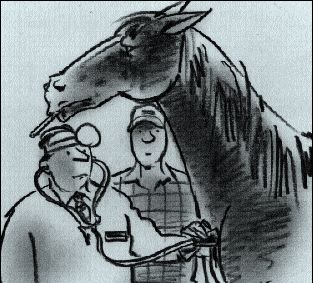D
Dodomeki
Guest
Published: Tuesday August 17, 2010 MYT 9:07:00 PM
Updated: Tuesday August 17, 2010 MYT 9:42:44 PM
Horse racing in Malaysia comes to a halt due to an infected horse
By ALEX TENG
IPOH: A nationwide ban on the movement of horses has been imposed and horse-racing will come to a halt for at least two weeks following the discovery a horse with the infectious flu-like “strangles” at the Perak Turf Club. The Penang Turf Club said in a press statement Tuesday that the movement of all horses has been suspended with immediate effect until further notice.
As the Penang Turf Club is under renovations, the race meetings are being held at the Ipoh Turf Club where the infected horse was discovered. A horse named Classic Sparkle tested positive for “strangles,” a highly contagious equine disease caused by the bacterium, Streptococcus equi. The disease is characterised by severe inflammation of the mucosa of the head and throat, with extensive swelling and often rupture of the lymph nodes, which produces large amounts of thick, creamy pus.
Bought for RM30,000 at the 2008 National Stud Farm Premier Sale, Malaysian-bred Classic Sparkle had won RM62,000, to date, in prize money. The four-year-old mare by Pacific Prince was sent to the spelling station three months ago in May and had only returned to the Perak Turf Club’s stables two weeks ago.
”She (Classic Sparkle) had a temperature on Aug 2 and was sick for four days. The veterinary physicians later informed me about her diagnostic test result which was positive to strangles. “I was giving her a break and was hoping to run her in a NSF Cup race next month. Just too bad, this had to happen,’’ said owner Asogar Manickam.
In June, 2004, the National Stud Farm was also put under quarantine after a mare died of strangles. The government veterinary authorities collected mucous and blood samples from all of the 169 horses residing at the stud for further testing. A further six horses at the farm were also later tested positive and were isolated for treatment after the completion of analyses by the Veterinary Research Institute.


